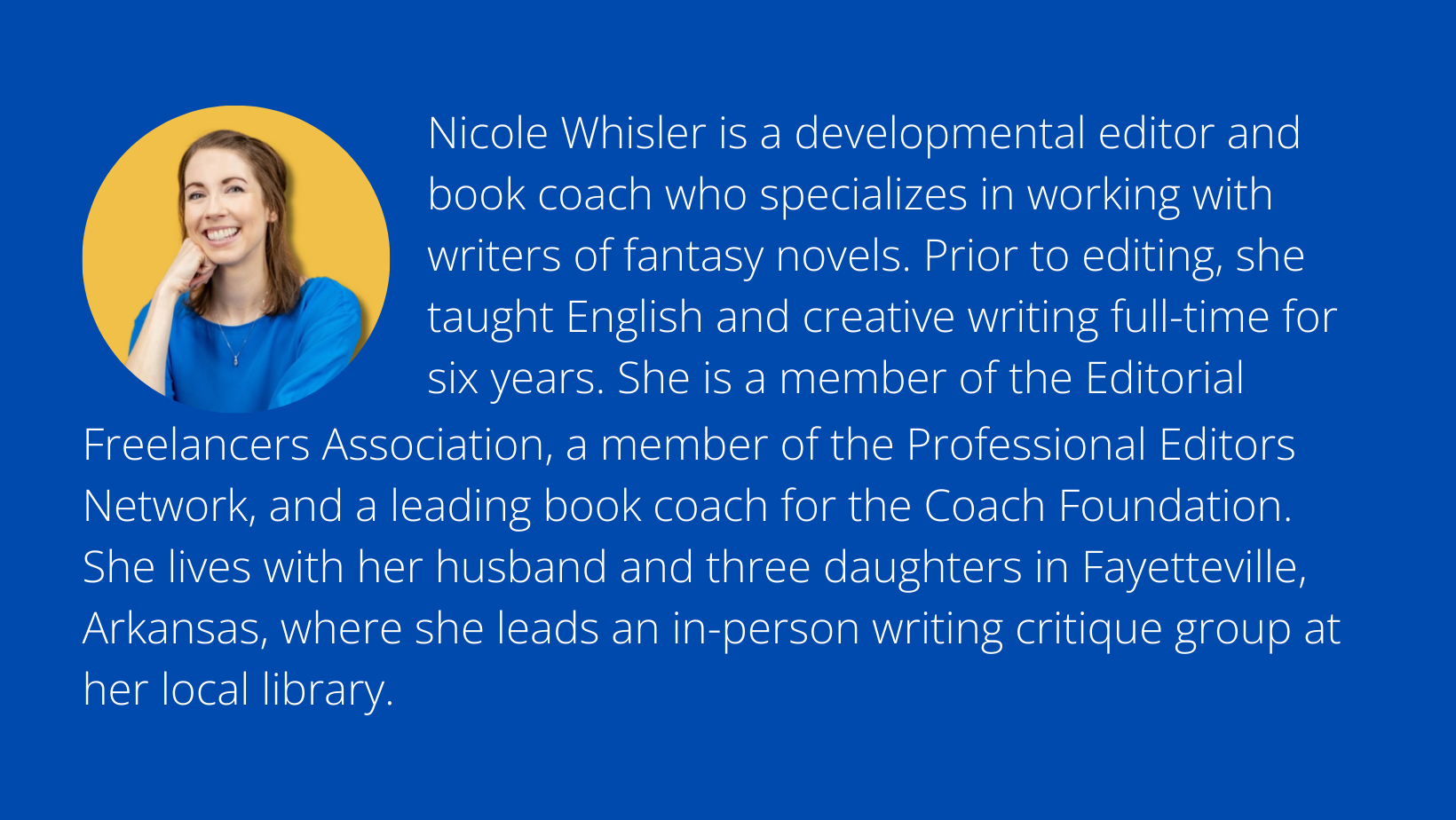Whisler Edits Blog

5 Items Protagonists Lack in a First Draft
Discover in this post …
how your true story often emerges in your second draft, not your first.
5 protagonist-related items that will confuse or frustrate readers if you don’t include them in your novel.
why each item is essential in a final draft.
Second Draft Magic
As much as we’d like to write perfect first drafts, it’s usually the second draft where the magic happens.
It’s the writers who recognize this simple fact who are most likely to keep their momentum in their writing. Those writers recognize that although they’ve basically spit all over the page in their first draft, crafting their true story—the story they actually meant to write, not the one currently represented by the ink on the page—will take dedicated time and focus to shape. They also understand it’s easiest to shape once they have a clear idea of the big picture.
I would never attempt to break your momentum by encouraging you to analyze your first draft for the following items as you’re writing it, but once you get to your second draft, a checklist like the one below can help you craft a protagonist readers will root for.
The following five items do not reflect my personal preferences. Case in point: I’m not going to argue that your protagonist needs to have a cute little dragon sidekick, or needs to be a certain height or weight, or needs to have a love story subplot. It’s not about my personal likes or dislikes. Rather, the following items revolve around avoiding reader confusion, and they’re based on issues I’ve commonly seen in my editing. If any of these items is missing, readers can grow bored, frustrated, or annoyed as they’re reading your story—and they may put down your book.
We can’t have that! So let’s dive in. Here are five items I’ve noticed in my developmental editing and book coaching that protagonists often lack in a first draft:
5 Items to Give Your Protagonist by the Final Draft
1. A clear goal in each scene

Writers usually know their protagonist’s goal in each scene, so they assume readers will remember it as well. However, what’s clear in your head needs to be communicated on the page. You might worry that you’re being too obvious, but the greater danger is losing readers because they’re no longer on track with what’s happening in your story. Reminding readers of your protagonist’s goal in the scene (which should in turn move your protagonist closer to their global story goal) is essential, and it’s easy to forget this in your first draft.
The goal doesn’t have to be big, by the way. Sure, maybe your protagonist is attempting to trick the antagonist—that’s a big deal!—but they might just as easily be searching for water after waking up thirsty in the night.
I’ve been in critique groups before in which writers explain themselves after critique members bring up their confusions. Writers will say, “Oh, this is what she’s doing. You didn’t get that? Hope that’s clear now!” But readers don’t have the authors at their side as they read. They can’t ask you questions. Everything you want to communicate needs to exist on the page.
Years ago, I brought a scene to my writing critique group in which my protagonist was wandering around the mountaintop, searching for a particular item. I did my best to set the scene with vivid imagery and strong intrigue. I thought readers would be excited alongside my protagonist as she searched!
But because I didn’t let readers in on my protagonist’s goal, the scene felt aimless, as if my protagonist were simply wandering, not searching. Readers didn’t know what my protagonist was looking for, so they felt as if something vital was missing from the scene. They were bored, not intrigued. It took the critique group to clue me in!
2. Proactivity

It can be easy to view your plot as a series of events that happens to your protagonist, but don’t forget that you chose your protagonist for a reason. Let them protag. Let them make choices. Let them have agency over the story’s events!
Character proactivity is connected to item #1, but it’s not the same. It doesn’t matter if your protagonist has a goal if they don’t take active steps to reach it. Especially in a first novel, it’s common for writers to fall into the trap of allowing their protagonist to observe rather than act. You’ll know you’re guilty of this if everyone around your protagonist is super interesting, but your protagonist is somehow the blandest of your characters. Don’t let this be you. Have confidence in your protagonist, give them a strong personality, and make sure they make choices that bring them closer to (or farther from) their goals!
You might be thinking, But what about the scenes where my protagonist can’t be super proactive? Like a prison scene?
I’ve worked with a writer who included a heavy dose of prison scenes in her first draft. Once she was ready to revise that draft, we discussed the following:
She didn’t need as many prison scenes as she initially thought she did.
When those types of scenes were necessary, there were still ways her protagonist could take charge of the scene. He could plan his mode of escape, for example. Or he could make a conscious decision about what to do next, thus setting reader expectations and keeping them engaged in the current scene rather than waiting for the next hint of movement in the story.
As a result, the writer was able to revise her material in a way that kept readers active and invested in her story, not on pause.
3. A clear motivation behind the goal

Maybe your protagonist has a goal in each scene and actively pursues it . . . but if they don’t have a reason behind that goal (or if readers don’t understand that reason), you’re still in danger of losing readers.
Wow, you might be thinking. It’s way too easy to lose readers. This sounds hard. There’s a lot to remember.
But think about it. If readers don’t understand why your protagonist does what they do, why would they care? If they don’t know what reaching those goals means to your protagonist on a conscious or subconscious level, where is the meaning in reaching the goal?
I recently read a popular novel (I won’t give the title since I personally wasn’t a fan, but others might be!) in which the protagonist a) had goals and b) took active steps toward reaching those goals . . . but I never cared whether he reached them.
His goals involved stealing from nobility (think Robin Hood style), but I never got into his head enough to know why success was so important to him. I’m all for imperfect characters, but they need to be redeemable enough that I can at least respect what they’re doing in the story.
For example, Aladdin is a thief, but I attached to him because his story makes it plain that a) he steals to survive and b) he is a decent human being. He gives up his hard-earned bread for hungry children, so I was able to root for him from the start.
Knowing your protagonist’s motivation creates an emotional bond with readers and tells them why they should care. To check how you’re doing in this area, ask yourself the following questions:
Do I know exactly why my protagonist does what they do?
Do readers know it too?
4. Evident arc of change by the end

As humans, we crave stories about transformation. We want to see how the external events of a story change characters on an internal level. This desire is often subconscious, but it’s the reason we expose ourselves to stories over and over again. We wonder how the protagonist will manage against the pressure of the plot—and if the protagonist came out alive, maybe we can too as we face similar life obstacles.
Is it possible to write a story that isn’t about change? Of course. James Bond is a prime example. In many of his storylines, he’s able to captivate readers without much of an internal character arc. But filmmakers later gave him an arc. Why? Because they recognized that viewers would get bored without change.
Consider your goals for your story. Are you trying to write a story that’s fun and light and will entertain readers? Great. But if you’re also trying to connect with readers on an emotional level, be sure to include a character arc that shows readers how your protagonist changes and grows as a result of the plot.
Give readers a character who changes substantially by the end, and they’ll remember your story.
5. Your protagonist’s reactions to story events

This is the most common missing item I see, especially in my specialty of working with fantasy writers—so hear me out!
Often, writers mistake themselves for their protagonist, especially in a first novel. While it’s completely normal and acceptable to add realism by inserting your own thoughts and emotions into your characters, here’s the common problem that can happen:
Your thoughts and emotions don’t make it onto the page.
So where do they go? This is a strange phenomenon. It’s as if there’s some kind of cloudy kingdom where your thoughts and feelings go, somewhere between your head and the page. Here’s how you can know if this is you: if you’re feeling your story on a deep level as you’re reading, but readers aren’t. (If you aren’t sure, put yourself and your pages out there and ask readers what they feel as they read!)
Thank goodness there’s a fix to this. All you need to do is make sure you include your protagonist’s reactions on the page.
I have a client who excels at this. When something happens in a scene, I know whether the protagonist agrees or disagrees. I know if he already knew the information or if it’s news to him. I know how he feels about what’s happening in the scene. I also learn more about his character (he happens to be quite humorous, so it’s always fun to get into his head!).
This particular client is writing an action story, by the way, and he’s able to include his protagonist’s reactions without slowing down the pacing of the scene itself. Naturally, you’ll want to consider the balance/pacing of your story, but know that it’s more common for writers to forget to include their protagonist’s reaction rather than to include too much.
Here’s an example of character reaction in The Way of Kings by Brandon Sanderson. Shallan, one of Sanderson’s protagonists, has just finished writing a letter and is reflecting on what she wrote. Notice how her thoughts come across directly, as if readers are inside her mind:
“She raised her brush. Her arguments seemed imperfect now that she considered them. She exposed her ignorance, then expected Jasnah to welcome her? Still, it seemed the right thing to do, for all the fact that this letter was a lie. A lie built of truths. She hadn’t truly come to partake of Jasnah’s knowledge. She had come as a thief.”
If Sanderson had chosen to end this scene with the letter and hadn’t included Shallan’s reaction to what she wrote, he would have missed a key opportunity for readers to get to know her on a deeper level.
If you’d like to check how you’re doing with character reaction, simply choose a scene in your work in progress and highlight your protagonist’s reactions to the story events (any thoughts, feelings, insights into your character’s mind). If there’s nothing to highlight, you’ll know you have something to work on.
Now that you know the five items protagonists commonly lack in a first draft, you can revise your draft with confidence and build a protagonist readers can root for. Here’s that checklist one more time:
A clear goal in each scene
Proactivity
A clear motivation behind the goal
Evident arc of change by the end
Your protagonist’s reactions to story events
Which of these five items stood out most to you? Which do you excel at already, and which would you like to work on? Let me know in the comments!
Do you want to learn how to write a story that makes your target readers stand up and cheer? If you’d like support from A to Z (from brainstorming to drafting to revising to publication), book a Discovery Call with me to see if you’re a good fit to join my book coaching program, Fantasy Footsteps: Road to Publication. And if you haven’t done so already, grab your Free Guide on how to hook readers from your story’s start!

